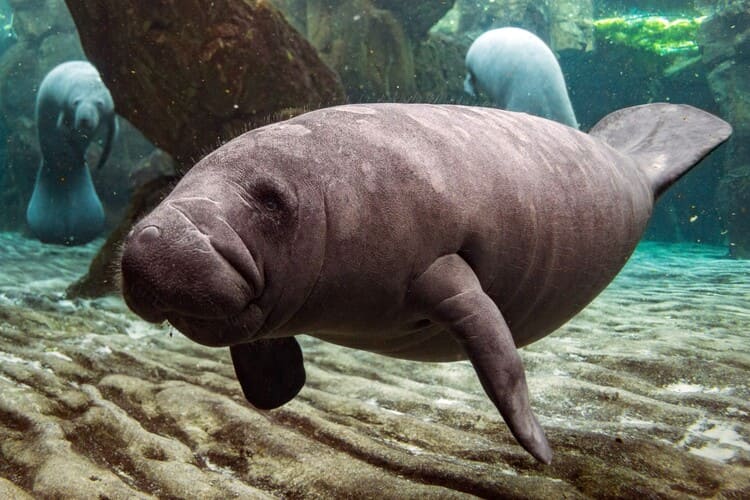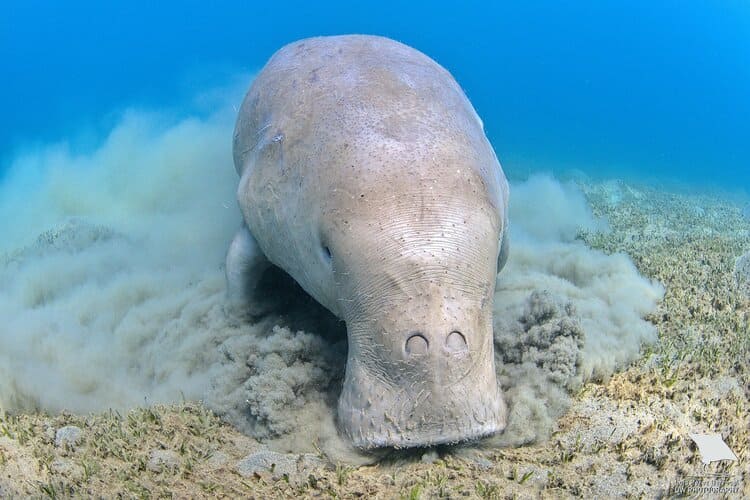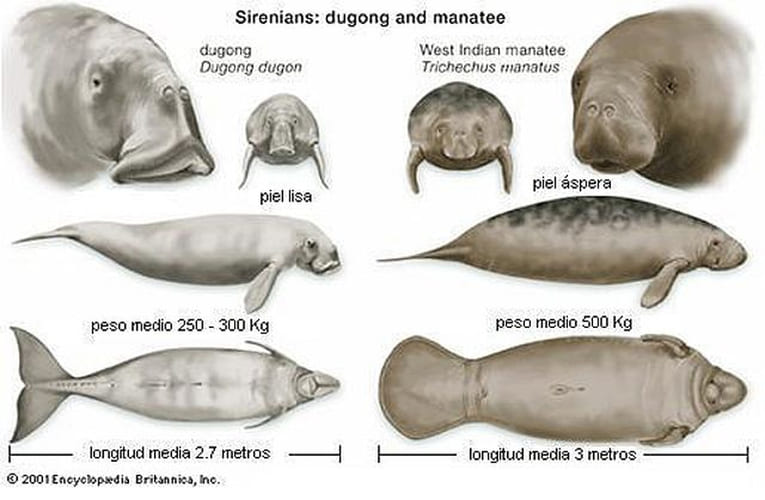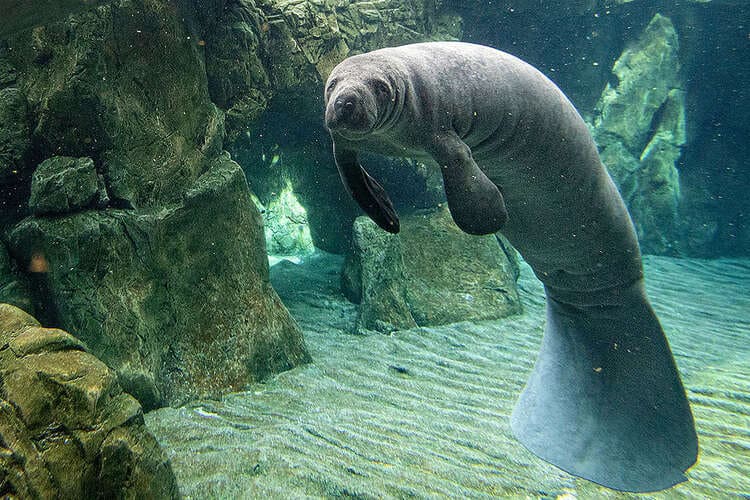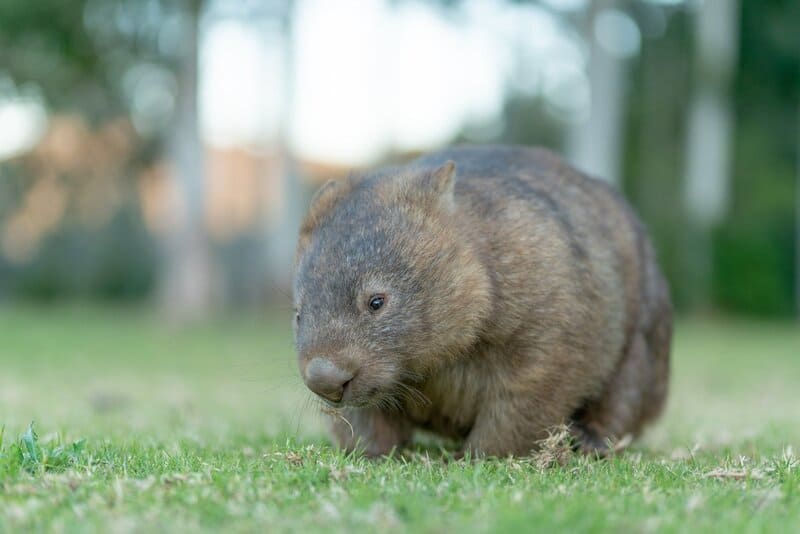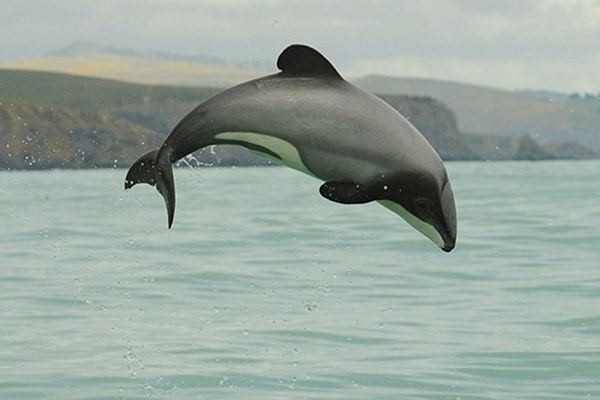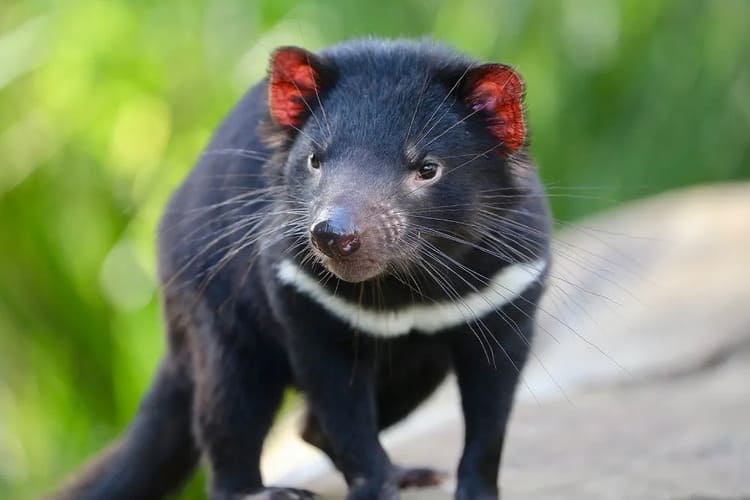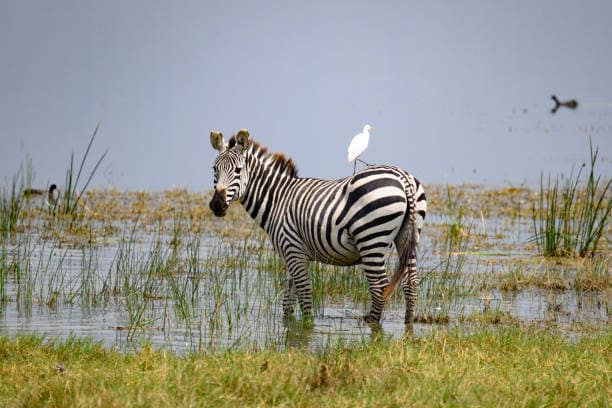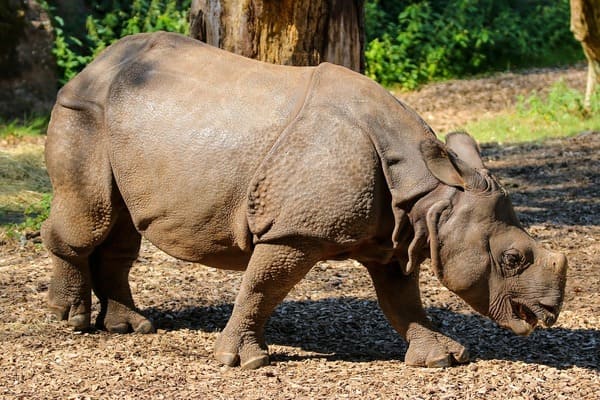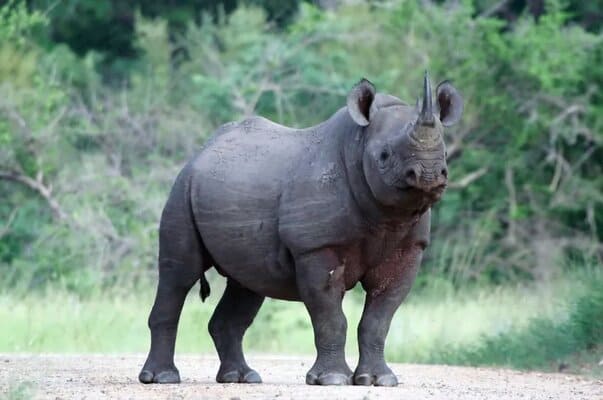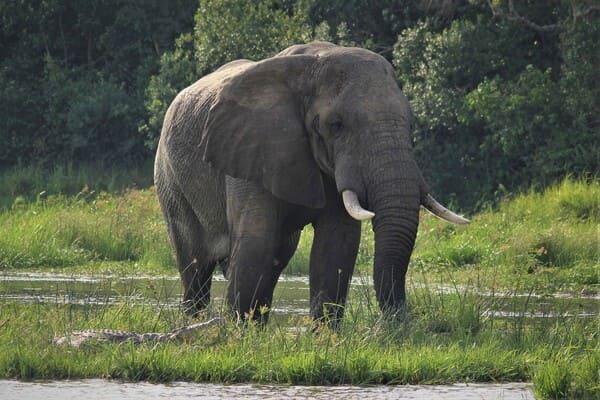Dugong
IUCN
VUBasic Information
Scientific classification
- name:Dugong
- Scientific Name:Dugong dugon
- Outline:Mammal
- Family:Dugongidae Dugong
Vital signs
- length:2.5–3.3 m
- Weight:230–420 kg
- lifetime:50–70 years; maturity ~6–17 yrs; calving every 3–7 yrs
Feature
Seagrass specialist; coastal shallows; fluked tail; down‑turned snout; ecosystem engineer.
Distribution and Habitat
Indo‑West Pacific shallow seagrass meadows from East Africa/Red Sea to SE Asia and northern Australia.
Appearance
Fusiform thick‑skinned body; flippers; horizontal fluked tail; bristled mouth; short tusks in adult males.
Details
Dugong (Dugong dugon) is a large seagrass‑grazing aquarium/sirenian-mammals-characteristics-and-examples.html">sirenian of tropical/subtropicalIndo‑West Pacific shallows. As a seagrass‑meadow ecosystem engineer, it promotes productivity through grazing and sediment disturbance. Global IUCN status: Vulnerable (VU).
Basics
Scientific name: Dugong dugon
Size: 2.5–3.3 m; 230–420 kg
Longevity: typically 50–70 years; maturity ~6–17 yrs; calving interval 3–7 yrs
Ecology
Specialist grazer of seagrasses, leaving feeding trails across tidal/subtidal meadows; usually solitary, in pairs or small groups; movements follow monsoons, tides and seagrass phenology.
Identification
Fusiform body with thick skin; flipper‑like forelimbs; horizontal fluked tail; down‑turned snout and bristled mouth; adult males develop short tusks.
Threats & Conservation
Habitat loss/degradation from turbidity, reclamation, storms and heatwaves.
Human activity: vessel strikes, net entanglement/bycatch, pollution and noise.
Hunting/conflict persists locally.
Measures: protect key meadows with speed/gear limits, gear modification, seagrass restoration, stranding networks and monitoring.
FAQ
Q1. Dugong vs manatee?
Dugongs have a whale‑like fluked tail; manatees have a rounded paddle tail. Dugongs show a more down‑turned snout.
Q2. Diet?
Primarily seagrasses—tender leaves and shoots.
Q3. Why Vulnerable?
Fragmented declines driven by boat strikes, bycatch and seagrass loss; slow life history limits recovery.

